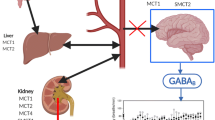Summary
Gamma-hydroxybutyric acid (GHB) as a natural component of the mammalian brain was first introduced in clinical anaesthesic practice more than 40 years ago. The drug was nearly forced from clinical practice because of its prolonged and variable duration of action. The results of recent clinical studies indicate a re-evaluation of GHB in various clinical fields. In the intensive care unit, GHB may be a favourable alternative to established drugs. The results of various clinical studies also suggest that GHB is efficacious in the treatment of alcohol withdrawal syndrome, and narcolepsy. GHB has been used successfully for short-term sedation in children. In addition, GHB has emerged as a street drug (“liquid ecstasy”). Overdose may lead to respiratory depression, coma, and even death. Chronic abuse itself may lead to severe withdrawal syndrome. The purpose of this article is to outline the neurophysiological, pharmacodynamic and pharmacokinetic characteristics of GHB, and to summarize the potential fields of use and misuse of GHB in clinical medicine and toxicology.
Zusammenfassung
Gamma-Hydroxy-Buttersäure (GHB) als natürlicher vorkommender Neurotransmitter des Menschen ist in der klinischen Anästhesie seit über 40 Jahren als intravenöses Anästhetikum bekannt. Aufgrund der unzureichend kalkulierbaren Wirkdauer wurde GHB allerdings relativ rasch aus der klinischen Anästhesie verdrängt. GHB erfuhr jedoch in der jüngsten Vergangenheit eine Neubewertung in der Indikationsstellung insbesondere zur Sedierung in der Intensivmedizin, zur Behandlung des Alkoholentzugssyndroms sowie der Narkolepsie. Des Weiteren wird GHB zur Kurzzeit-Sedierung von Kindern eingesetzt. Neben dem therapeutischen Einsatz kommt GHB eine zunehmende Bedeutung als Droge („Liquid ecstasy“) zu. In hohen Dosen führt es zu Koma und Atemdepression; über Todesfälle durch GHB wird in der Literatur berichtet. Chronischer Missbrauch von GHB kann zu einer schweren Entzugssymptomatik führen. Ziel dieser Übersichtarbeit ist es, die neurophysiologischen, pharmakodynamischen und pharmakokinetischen Grundlagen von GHB darzustellen. Die klinische Bedeutung von GHB sowie toxikologische Aspekte werden aufgezeigt.
Similar content being viewed by others
Author information
Authors and Affiliations
Corresponding author
Rights and permissions
About this article
Cite this article
Meyer, S., Kleinschmidt, S., Gottschling, S. et al. Gamma-hydroxy butyric acid: Neurotransmitter, sedative and party drug. Wien Med Wochenschr 155, 315–322 (2005). https://doi.org/10.1007/s10354-005-0174-4
Received:
Accepted:
Issue Date:
DOI: https://doi.org/10.1007/s10354-005-0174-4
Keywords
- Gamma-hydroxybutyric acid
- Intensive care medicine
- Sedation
- Alcohol withdrawal syndrome
- Narcolepsy
- Intoxication
- Liquid ecstasy




